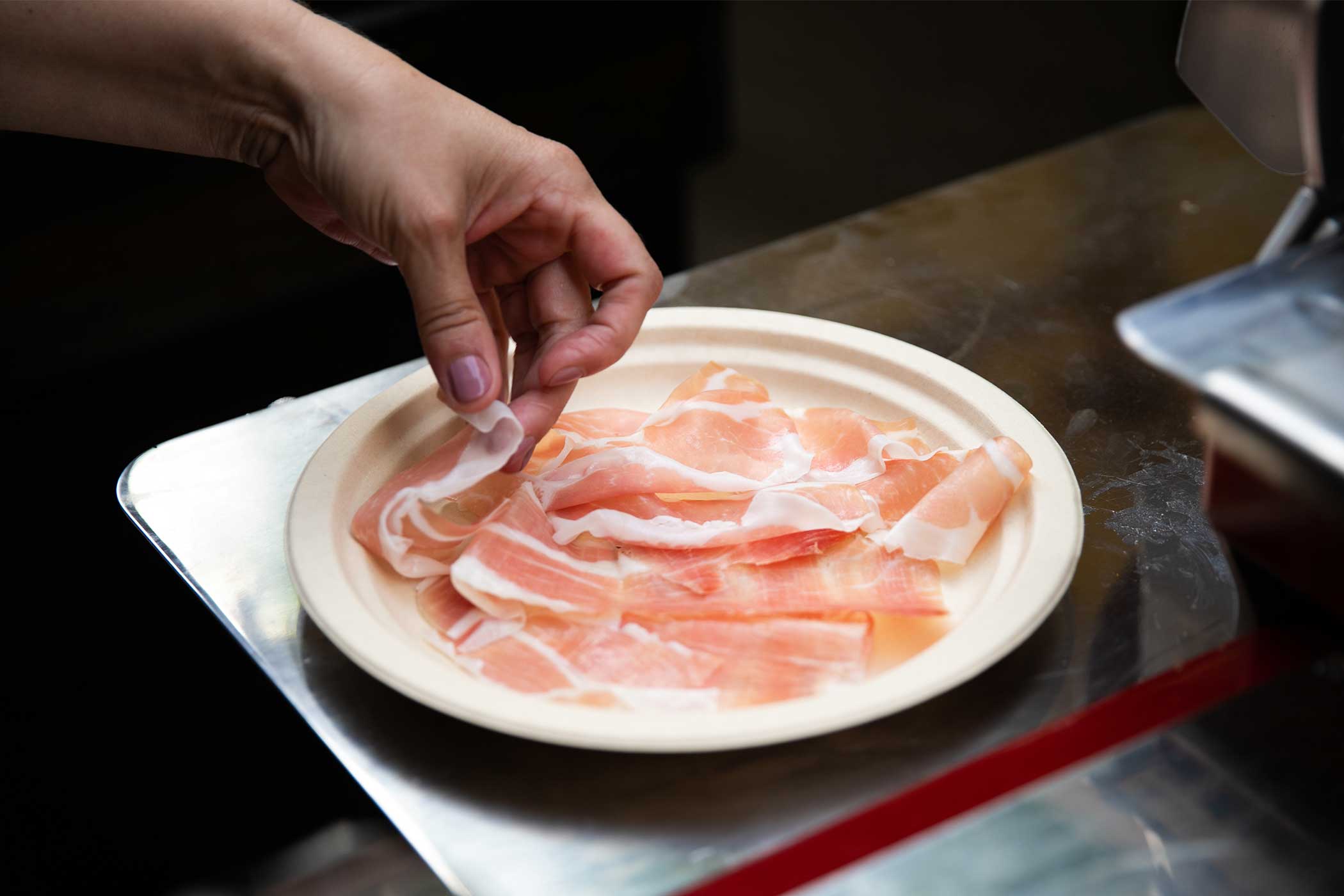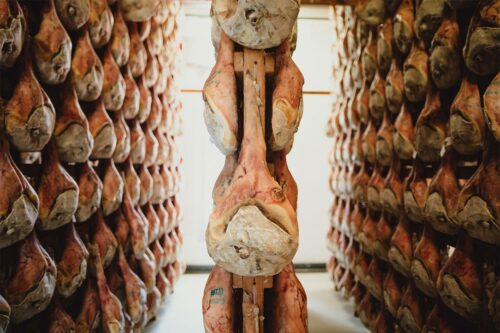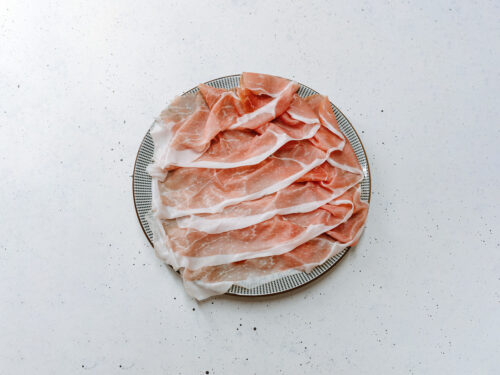The Consorteum of San Daniele Dop has been protecting the brand of the most loved prosciutto crudo in the world for over 60 years. And it does so in accordance with the rules and with an eye constantly on the end consumer. That is why real surveys are regularly carried out on a sample of consumers. These surveys are not only about the degree of satisfaction on this jewel, but inquire also on the ways through which people’s five senses perceive the aromas and features of San Daniele Dop.
What is the sensory map of prosciutto di San Daniele?
The surveys we carry out result in determining some parameters that define what we call the sensory map of Prosciutto di San Daniele. In short: we give the selected sample taster a consumer form, which he or she fills out after some prosciutto crudo tastings. After the tasting, the consumer assigns some characteristics to the prosciutto, based on his or her perceptions. The assessment is done on the look, the smell, the taste, the aroma and the texture. The purpose is to evaluate the acceptance and the appreciation towards San Daniele Dop. All these elements define the sensory map of prosciutto crudo.
How does the sensory analysis work?
Before the tastings that leads to the assessment, there are two important initial features. First of all we make sure that there are no spots/bruises/very bad showy faults in the appearance, then we take care never to remove the surrounding fat. At this stage we can start slicing, in this case with a slicing machine.
The sensory analyses carried out with the experts are usually done with sections cut from the rump, as this part represents the various muscle groups of the prosciutto, while the tastings with the consumers are done with the section cut from the shank.
The charcteristics of the San Daniele: the phases of the sensory analysis
Now let’s see what the phases that form the sensory analysis are.
- Visual phase:
The first step of the sensory analysis is that regarding sight. It allows to evaluate the look (color, evenness etc.) of both the muscle part of the prosciutto, and the surrounding fat (adipose tissue). The prosciutto slices, thinly cut and arranged neatly on the plate, must be at least three for each prosciutto that is tasted. The slice should be therefore taken (preferably with the hands) to open it up and look at it in its entirety. The lean part is pinkish red and even. We consider that any spots, halos or iridescences are “flaws” and, as such they lower the overall assessment. The surrounding fat is pinkish white, while the presence of tyrosine crystals (which is the sign of a very long seasoning) is not considered a flaw. - Olfactory phase
The sense involved in this phase is smell. The tasting is done taking the slice (with the hands if possible or with the help of a fork) to smell it, from the outside in. By this act some differences may be perceived, as the outer part is usually drier than the inside. Folding the slice in two is recommended, to better analyze it. At this stage we can identify various scents. We find six main ones: milky (especially perceivable on the fat and it is caused by the chemical change the fat goes through during the maturing process), smell of cellar (typical smell you can find in artisanal ham factories), bread crust (perceivable in the outer part of the slice), dried fruit, intense (when the scent is pleasant and persistent) and complex(when a mix of positive olfactory factors is perceived ) - Mouthfeel, touch and after scent sensations
The last phase consists of three different moments, all of them related to the taste of the San Daniele Dop slice. First thing first: you must obviously taste the slice, without removing the fat. In the first step we will be able to point out the sweet notes, the balance of the meat (this means that is not oversalted), the palatable taste (namely the pronounced and pleasant taste).
After the taste analysis, we move on to the touch, understood here as chewing. Sensations vary according to the thickness of the slice and the degree of maturation. Long aging (more protein breakdown, more lypolisis and less humidity) make the flesh more soluble. Three elements are encoded here: tenderness(understood as softness of the meaty part of the slice), the way it melts (that is how long it takes to melt in the mouth) and chewiness(namely how long it takes to chew the slice to swallow it, the more marbled is the slice, the softer it is).
We finally have the after scent sensations, obtained when the slice is swallowed. The olfactory sensations apply also here with one difference; here the aromatic hints are perceived also after swallowing, in the back of the nose
So now, putting together all these elements, each of us will be able, according to the slice he or she tasted, to create his or her own sensory map of the prosciutto crudo that is a spearhead of Made In Italy. The most distinctive features of Prosciutto di San Daniele as if by magic will become clear to you, and a tasting will never have been so pleasant.





